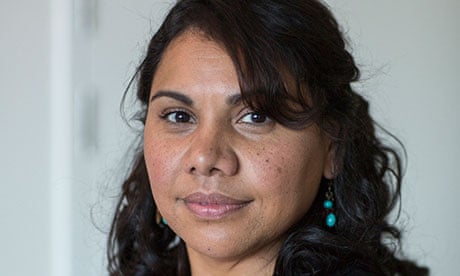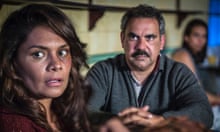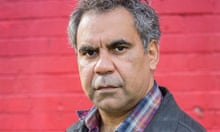Gurrumul Yunupingu is singing as the sunlight fades over the Block. His voice echoes off bricked buildings. Shane Phillips is recording the performance on his iPhone.
Like hundreds of others, Phillips is here to watch an open-air screening of the second series of Redfern Now. The 2013 Australian local hero of the year and noted Redfern community activist is ecstatic.
“It’s breathing life back into our community,” Phillips says. “We were really happy with the way we were portrayed [in the last series]. Instead of the old ways that they stereotypically portrayed us, it was actually Indigenous writers this time. They saw it through their own eyes.
“We’ve got no control over what’s been before, but people can learn from Redfern Now. They can see that such a powerful tool is able to help break perceptions and show the greatness and the richness of our people.”
The ABC’s six-part series of urban Indigenous life won acclaim and multiple awards. Its blend of social commentary and character-driven drama was as subtle as it was confronting.
Behind us on the Block, local youth workers are putting on a sausage sizzle for the crowd. Many of these young men featured in the first series.
Roy Smith, 24, is proud that his background role is featured in the opening credits. “It’s great for young Indigenous talent,” he says, but is quick to add that the filming process has included the whole of Redfern. “It’s just part of the community now,” he says.
Among the audience, dotted with local hipsters and other residents, there are Indigenous Australians from around the state. Jason Pitt, 48, watched every episode and came down to the Block just for the atmosphere.
“I liked them all,” he says, “They reminded me of growing up. I grew up in the country, but being Aboriginal means it’s the same story, just a different time and different place. We relate to anything.”
It’s dark now. The huge screen behind the stage flicks on. The producers have decided to show episode two of the new series and director Rachel Perkins picks up the microphone to introduce it. “Thank you to Redfern,” she says, “You have been at the forefront of Indigenous affairs for 50 years. This is for you.”
The next hour continues in the same vein as the previous series. In essence, says Perkins, this is a story “about finding love and learning to love yourself”. It revisits a character from last year but the story is fresh. It engages with issues of domestic violence and community relations with the police.
It’s pithy (“one good thing about being a black woman – you get bashed around a bit but you learn about police process”), but warm at the same time.
There’s a silence on the Block for most of the screening – broken only through occasional laughter and applause at the end.
As the titles run, the crowd evaporates into the Sydney night. Tonight was for them, but on Thursday it will be broadcast across Australia.
“It’s the only show on TV with real Australian identity,” says Kate Comino, a teacher from a nearby suburb, “This history is all Australian’s history. It couldn’t be made anywhere else in the world.”


